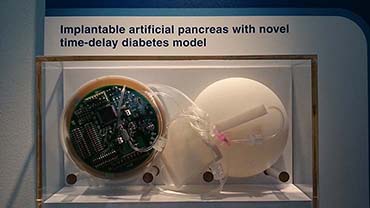The development of an artificial pancreas capable of providing tight blood glucose control for diabetics remains one of the most challenging problems in the field of medical engineering. Dr. Yvonne Ho’s book will serve as an invaluable reference for those engaged in research on diabetes mellitus and artificial pancreas. Following an introductory chapter that provides a concise overview of the research topic, Chapter 2 offers a comprehensive description of diabetes mellitus and its related physiology. Chapter 3 provides a state-of-the-art review of various treatment options. The subsequent chapters primarily focus on presenting novel research and development findings related to an implantable artificial pancreas.
The implantable artificial pancreas aims to regulate blood glucose levels by administering appropriate insulin dosages when required. By directly sensing blood glucose levels and delivering insulin into the vein, this implantable device seeks to eliminate the delays associated with subcutaneous blood glucose sensing and insulin delivery. Preliminary in vitro and in vivo experimental results suggest that the implantable approach to blood glucose control could be a clinically viable alternative to pancreas transplantation. The book demonstrates a deep understanding of blood glucose level modeling and control, as well as the design of implantable devices.
This book will serve as a valuable addition to the libraries of scientists and engineers working at the intersection of engineering and medicine.
Chee-Kong Chui, January 2018


